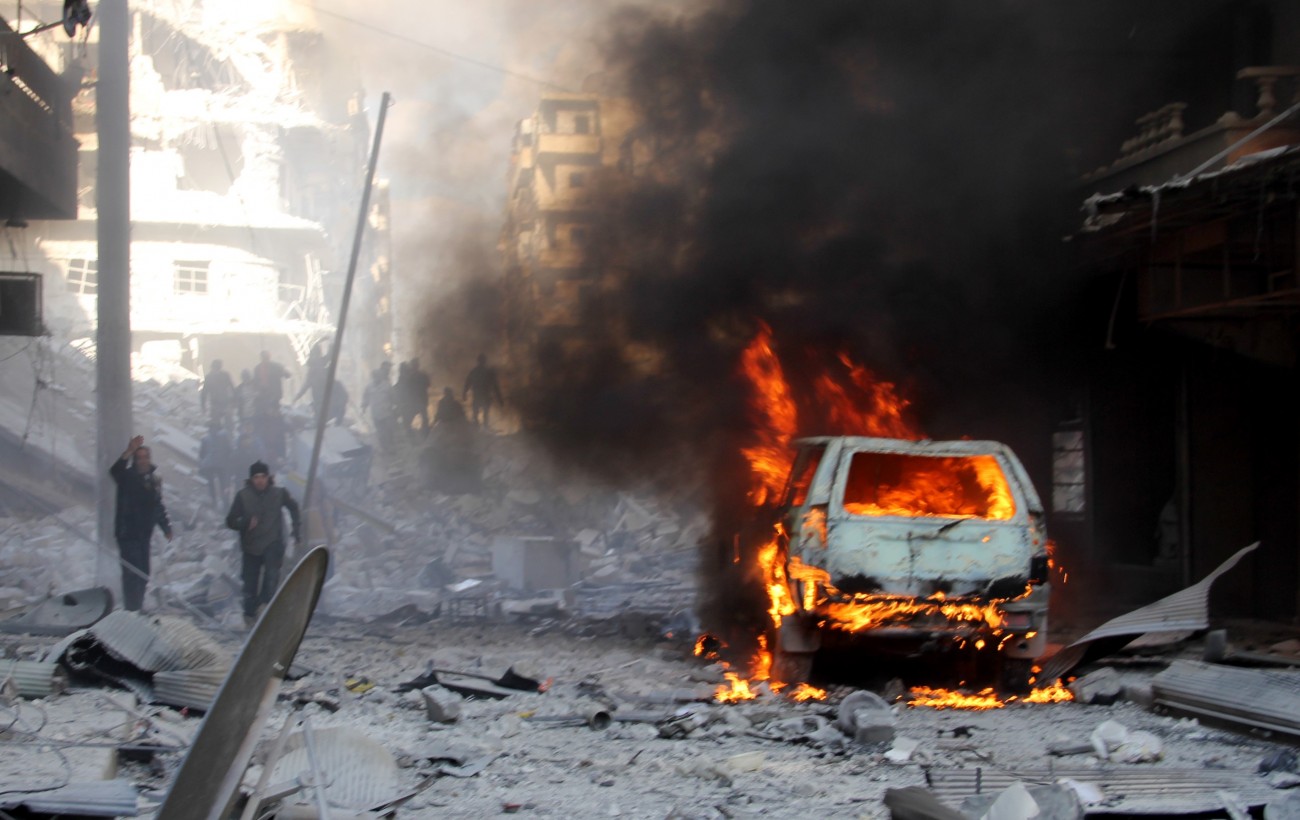
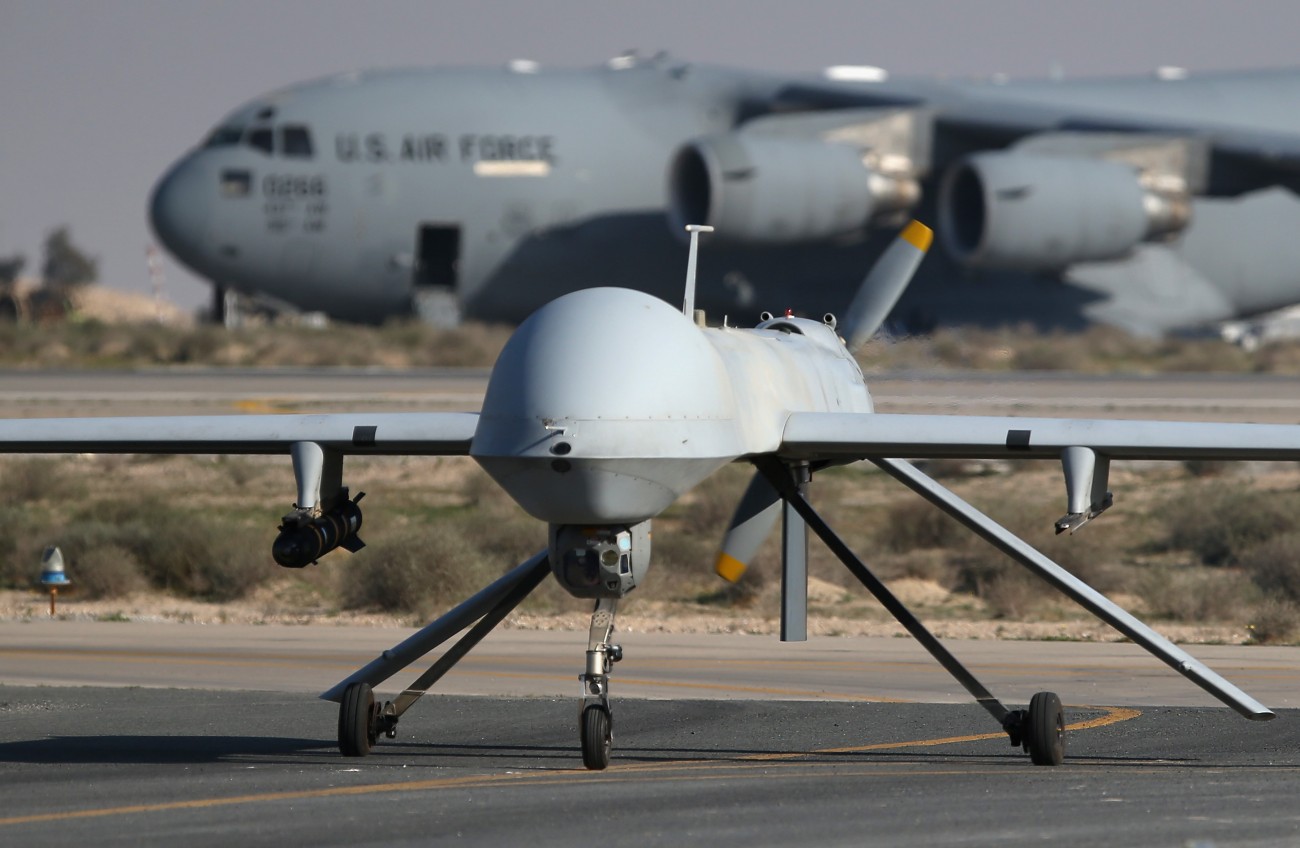
Summary
Today’s landscape is dramatically different from that to which we awoke on Sept. 11, 2001. It’s a complex mix of foreign and domestic forces influenced by economic and social conditions that breed extremism which ebbs and flows across physical and cyber space often defined by great power competition. While terrorist groups like al-Qaeda and ISIS have innovated and adapted, U.S. counterterrorism strategy has remained unchanged, fighting yesterday’s war while neglecting present day threats as well as those over the near horizon. America is long overdue to update its counterterrorism strategy and, perhaps more importantly, how we measure success.
Introduction
As protestors flood America’s streets to decry racism, social injustice, and police brutality and the world struggles with the coronavirus pandemic, thoughtful minds speak about redefining national security. Threats Americans face are not exclusively measured nor addressed by missiles, tanks, drones, and terrorism, but by racial inequality, disease, poverty, and climate change. The conditions playing out before our own eyes on Main Street should compel America to likewise appreciate the sense of urgency in updating its stagnant and outdated counterterrorism strategy and, perhaps more importantly, how we measure success.
Today’s landscape is dramatically different from that to which we awoke on Sept. 11, 2001. It’s a complex mix of foreign and domestic forces influenced by economic and social conditions that breed extremism which ebbs and flows across physical and cyber space often defined by great power competition. That dynamic creates boundaries and plays sides among multipolar state and non-state actors as witnessed in Syria, Iraq, Lebanon, Libya, and Afghanistan, to name but a few. On the one hand, al-Qaeda, its affiliates, and ISIS have not merely demonstrated resiliency and staying power through wars of attrition, but rather have innovated to adapt in ways facilitating their growth and resurgence. U.S. counterterrorism strategy, on the other hand, has remained unchanged, fighting yesterday’s war while neglecting present day threats as well as those over the near horizon.
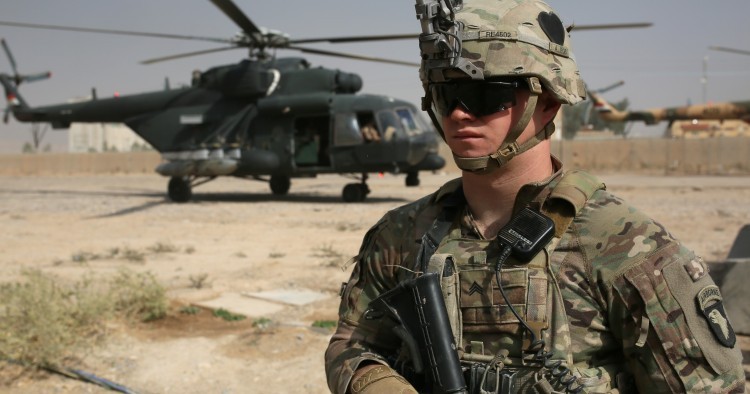
“U.S. counterterrorism strategy, on the other hand, has remained unchanged, fighting yesterday’s war while neglecting present day threats as well as those over the near horizon.”
The Preemptive Strategy and Resting on our Laurels
U.S. strategy since 9/11 has focused on preemption by pursuing terrorist groups abroad before they might successfully direct operations against the homeland. The U.S. prioritized removal of terrorist leaders through kinetic strikes in their distant sanctuaries from where they would otherwise plan, direct, fund, train, and equip those who would undertake attacks on American soil. The doctrine was well suited to the centrally managed structure on which al-Qaeda relied in 2001.
If one measures by the impact on al-Qaeda’s leadership to execute another 9/11 type of attack, this strategy was successful. Sustained counterterrorist pressure, the euphemism for America’s drone campaign, decimated core al-Qaeda’s senior leadership, impeded it from effectively directing and managing worldwide operations, and forced it to adopt a defensive posture. There is also some degree of truth to the judgment that dead terrorist leaders often take their plans and contacts with them to the grave.
The downside, however, was U.S. shortsightedness in examining how extremist groups were adapting and our inflexibility to leverage short-term gains and innovate. The U.S. instead continued to disproportionately fund kinetic tools while dismissing opportunities to evolve a more holistic approach. The war on terrorism was perceived as being won on the strength of tactical kinetic successes — drone strikes — and we had the metrics and videos to prove it.
There was no imperative to explore what we might be missing or complement successful kinetic tactics with an international campaign of soft power to impede the conditions which give rise to extremism in the first place. Alternative points of view in the CIA’s Counterterrorist Mission Center, having been run at one point by the same imperious leader and his sycophantic minions for over nine years, are not welcome. Much of that leadership remains in place to this day, some migrating to employ the same model to other areas of conflict.
It’s only fair to recognize that in the decade after 9/11, U.S. attention and resources were consumed in managing the invasions and ensuing occupations of Afghanistan and Iraq. These wars had more to do with counterinsurgency than counterterrorism, and left little interest or money for a robust worldwide soft power campaign to address extremism. 2011’s Arab Spring brought forth another touchstone of opportunity, had the U.S. sought to leverage the popular uprisings in a more meaningful way. But again, we found ourselves influenced by a political-military perspective on the stability and threat considerations rising from individual countries, particularly Libya and Syria. Extremist groups, by contrast, seized opportunities arising from the movement in heretofore autocratic societies. They flamed divisions and created inroads among the resulting fractures across militant groups that endure today.
Rather than exploring how to leverage the Arab Spring phenomenon as a transformational portal and fully commit to rallying behind it or supporting the leaders being challenged, the U.S. took a rather inconsistent and vacillating approach. The U.S. messaged support for human rights and democracy while maintaining a skewed tact of neutrality in Egypt, half measures in Syria, withdrawal from Iraq, and short-term military intervention in Libya. There was little tangible investment in the democratic, progressive, or secularist movements the Arab Spring seemed to offer, no commitment to a long-term strategy, and no end game.
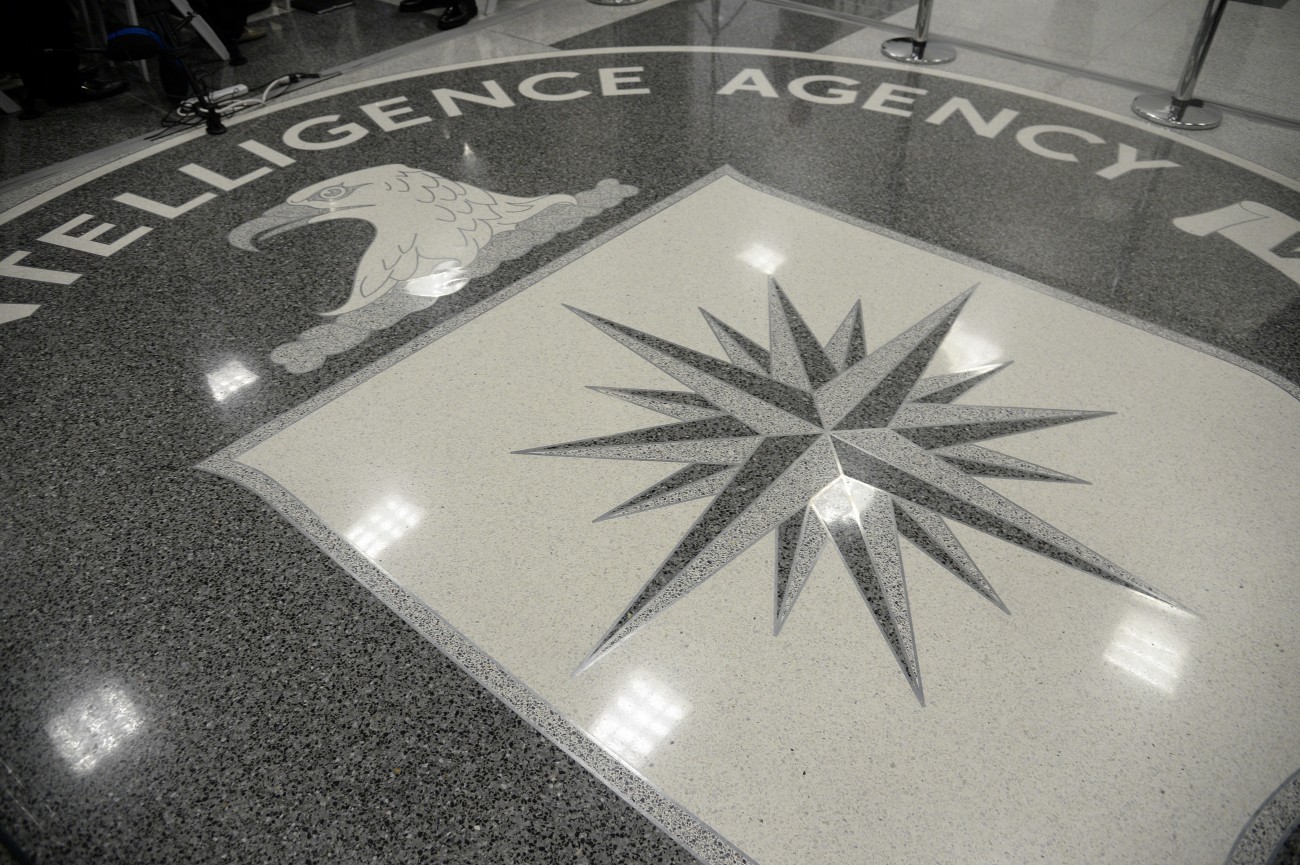
“Alternative points of view in the CIA’s Counterterrorist Mission Center, having at one point been run by the same imperious leader and his sycophantic minions for over nine years, are not welcome.”
The New Terrorist Strategy
In the meantime, al-Qaeda transitioned to a more decentralized structure that empowered worldwide affiliates. New franchises sprung forth in Yemen, North Africa, and Syria, to name but a few, which operated with greater independence and agility in adapting tactics to meet changing local and international conditions. Adherence to Osama bin Laden’s (OBL) pursuit of centrally planned, spectacular attacks gave way to Ayman al-Zawahiri’s willingness to allow affiliates greater ownership of planning and targeting. Declassified documents captured from the May 2011 raid against OBL’s Abbottabad compound reflect his ongoing, active, central management of al-Qaeda’s worldwide activities at the time of his death.
Zawahiri’s prolific videos, and the occasional glimpses we otherwise have from unclassified reports and the media, suggest that even while in hiding, he has managed likewise. Unlike OBL, however, Zawahiri has chosen a more hands-off approach to operational planning, instead taking on the role as that of an overall titular leader who sets the broader organization’s strategic vision. I suspect that Zawahiri’s lieutenants in Iran, Saif al-Adel and Abu Muhammad al-Masri, enjoy more room to at a minimum mentor and facilitate those operating from among al-Qaeda’s affiliates, given their greater freedom to manage the organization.
It’s not that the transition escaped U.S. notice, but it did little to alter our strategy, or outlook. Rather than see how the very nature of the threat was evolving, the U.S. simply shifted resources geographically where new fires broke out while maintaining the same heavy handed kinetic tactics. The U.S. grossly underinvested in diplomatic, economic, and social opportunities to achieve greater balance in the use of such kinetic tools with soft power that might check and ideally reverse the increasing momentum of Salafist ideology that was being weaponized through violence.
Al-Qaeda in the Arabian Peninsula (AQAP) propagandist and U.S. citizen Anwar al-Awlaki transformed the 9/11 model prior to his death in a September 2011 U.S. counterterrorism operation in Yemen. Awlaki innovated the “do it yourself from home approach” to inspiring and guiding low-level attacks on soft targets. His experience in the U.S. led him to believe that a proliferation of smaller-scale attacks by other U.S. residents would lead all Americans to feel vulnerable whether out shopping, seeing a movie, taking their children to school, or eating a meal. The tactic that terrorism could touch any American, anywhere, at anytime, undermined Western strategy that depended on preemption overseas and hardening of potential targets at home. Still, rather than adjust as our adversaries were now doing, American leadership, particularly the CIA, remained focused on killing Awlaki and other targets, believing that with their deaths, so went the new threat.
Awlaki’s model was cost efficient and more secure. Lone wolves operating independently in our own backyards could not be neutralized by operations abroad. Moreover, they were hard to identify through existing domestic law enforcement and foreign intelligence collection tools and techniques. Receiving inspiration, technical guidance, and examples through online communications, publications, and resources, such would-be terrorists required no direct command, control, communications, training, personnel support, or material resources. In the absence of an ability to fabricate explosives, buy a gun. No gun, use a knife. No knife, drive your car through a crowd.
If every venue and American were now targets, how could the government harden and protect everything? If any U.S. resident could likewise conduct such an attack, how do you legally determine who to monitor? Racial profiling? And where are the resources to take on a surveillance society, with what authorities, and at what cost to our civil liberties? As reflected in lone wolf attacks that occurred in San Bernardino, Orlando, Boston, and New York, the FBI might have taken vague note of future attackers, but absent prosecutable evidence of a crime, it lacked the bandwidth to investigate, surveil, or preempt.
Compounding the threat were home-grown extremists among white supremacists and ultranationalists who likewise modeled the same behaviors and leveraged available online jihadist resources and examples. Driven perhaps by different causes, their impact would achieve shared objectives with their antithetical jihadist counterparts in seeding hate, division, and chaos in American society. The very growth of such groups and their followers’ willingness to act, facilitated, and to various degrees protected, by a more toxic political environment propagated by President Donald J. Trump, and civil liberties considerations by the right and left alike, impeded the passage of domestic terrorism legislation.
Awlaki’s model did not mean an end to centrally planned attacks. AQAP explosives expert Ibrahim al-Asiri was empowered with the resources and freedom that led to his experimentation with printer cartridge bombs, underwear bombs, and surgically implanted devices that failed in several instances only by chance, luck, and the help of our friends. Asiri’s 2018 death in Yemen from a U.S. counterterrorism operation, which itself was the result more of luck than great planning, did not address the skills and innovations he developed, which have since been proliferated. And such improvisation by al-Qaeda affiliates continues today.
Some Intelligence Community counterterrorism experts, myself included, judged the enduring threat from Awlaki and Asiri, even after their deaths, as only eclipsed, if at all, by OBL himself. Meanwhile, Awlaki’s innovation was subsequently championed, replicated, and improved upon by ISIS, a formula on which their territorial losses in Syria and Iraq have made them increasingly reliant. Asiri’s technical innovations and proteges have also endured.
Even core al-Qaeda has reluctantly embraced the concepts of delegating, franchising, and encouraging individual lone wolves, despite Zawahiri’s inclination and that of his Iran-based chief legacy lieutenants, Abu Muhammad al-Masri and Saif al-Adel, to retain some element of centralized control. This has been reflected by the increasing degree of autonomy for affiliates pursuing external operations such as Hurras al-Din in Syria, AQAP in Yemen, al-Qaeda in the Lands of the Islamic Maghreb in North and Sub-Saharan Africa, and al-Shabab in East Africa, despite the occasional setback in the loss of leaders to U.S. counterterrorism operations.
Zawahiri and company still seek insight and influence which they leverage through their jihadist legitimacy, communications, and, in some cases, finance, but have become more open to smaller-scale and locally managed operations. If not tactical command and control, they envision longer range say over the group’s vision, message, and franchising. And they have grown more flexible in collaborating with partners with antithetical ideologies, whether that from the sanctuary and support provided by Iran’s Shiite theocrats to lower-level cooperation among other Salafist groups, even elements where ideological divisions or rivalries exist.
On paper, U.S. preemptive counterterrorism strategy is intended to holistically leverage all tools of power to not only dismantle and destroy terrorist organizations, but address the conditions that give rise to the extremism from which terrorism is born. But the reality is that U.S. strategy has been decidedly weighted to kinetic actions and a transactional philosophy, and not by accident.
Metrics have historically been the American measure for success, and no place more, perhaps, than military operations. Statistics reflecting body counts of presumed enemies killed or detained, strikes conducted, or ordnance dropped are tangible. Videos depicting missile strikes against terrorists and foreign fighters in their cars or against their compounds are also strangely seductive and intoxicating, particularly to civilians. One observer aptly referred to it as “Pred-Porn.” And after all, what sort of metrics or videos can illustrate the negation of extremism?
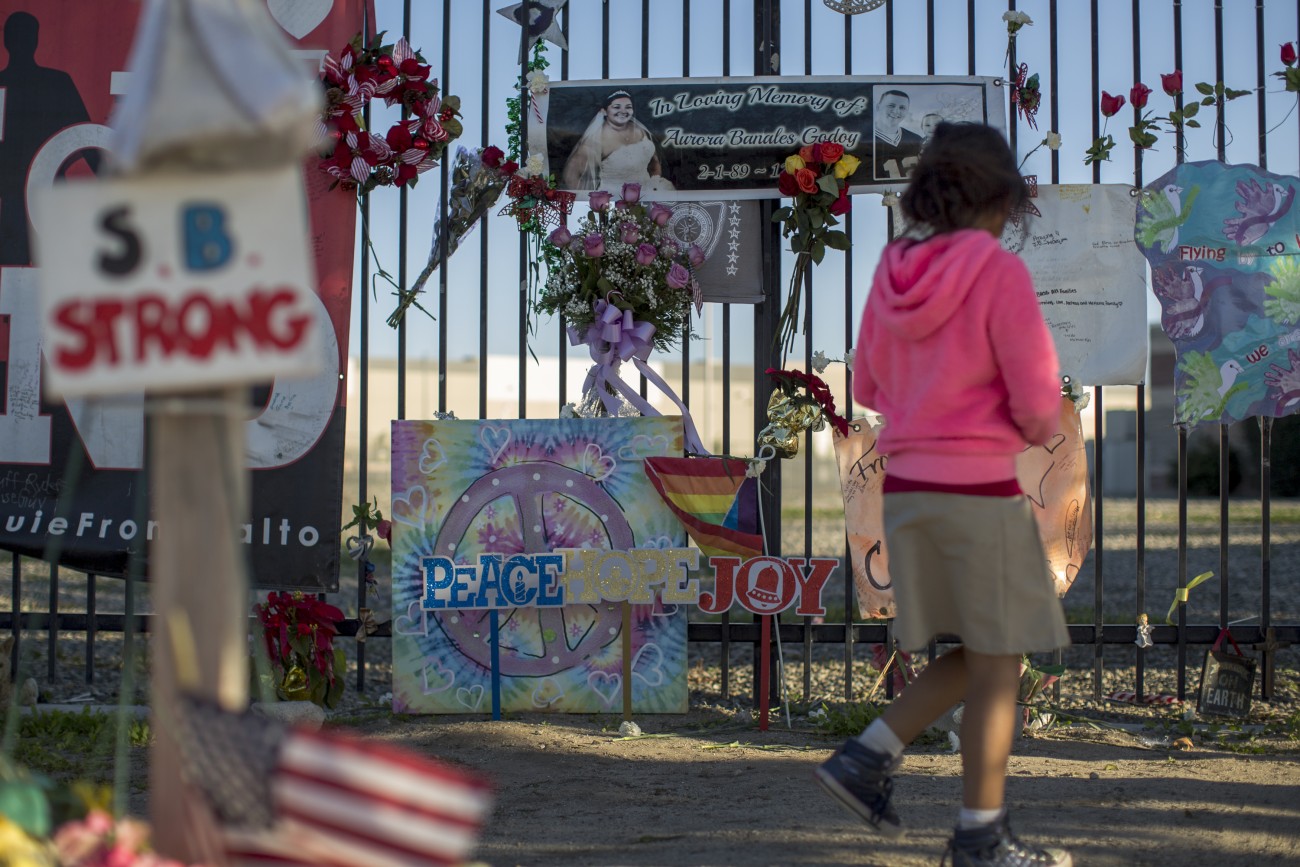
“The tactic that terrorism could touch any American, anywhere, at anytime, undermined Western strategy that depended on preemption overseas and hardening of potential targets at home.”
Soft Power in Counterterrorist Policy is more than Nation Building and Singing Kumbaya
“Soft power” itself became a politically loaded term — one mocked by those seeing it as wasted U.S. funding directed at nation building, perpetual aid projects, and conferences that amounted to little more than kumbaya singalongs in five-star hotels. “Green on blue” attacks against U.S. trainers and advisors further soured many, as did the perception that America was bearing a disproportionate amount of the costs in both blood and treasure.
For a time after its invasions of Afghanistan and Iraq, the U.S. actively courted foreign governments and companies to seek business opportunities that might infuse money and create jobs in industries that would leverage those countries’ natural resources. It was a way of sharing the responsibility and cost among international partners, but it was not well thought out. Such dealings tended to end badly owing to corruption or arrangements that did little to advantage local communities or bring sustainable economic opportunities at a grassroots level. Foreign governments and companies were prepared to profit from these countries’ natural resources, but resisted doing more to address fundamental infrastructure and economic needs. With the local communities lacking incentive to embrace and protect the foreign investors, security considerations also undermined such initiatives.
In the counterterrorism context, soft power means rather a complementary buffet of measures and resources. It does not mean a cessation of the use of force, but rather a well-considered buffet that balances the selective use of kinetic measures with financial and material investment, diplomacy, coalition building, overt and covert influence campaigns, and America’s sway over partners and international institutions such as the International Monetary Fund and the World Bank. It requires a campaign approach that informs direction and influences conditions with consistency, achievable waypoints, and a means to measure effectiveness.
Consider this somewhat in the context of a less exclusively U.S. dependent Marshall Plan aimed at rebuilding societies and their economies that emphasizes democratic institutions, free enterprise, and human rights. Even the successful campaign that drove ISIS from its territorial caliphate left scorched earth and broken institutions behind from which extremism is likely to resurge. Nowhere is this more evident than the territories the U.S. surrendered to radical Islamist, Turkish-supported Syrian proxies who took control of areas in formerly Kurdish-controlled lands in northwest Syria. This same vulnerability is likewise present in the more Sunni inhabited lands of northern and western Iraq.
Any such campaign begins with intelligence collection focused on penetrating and understanding our enemies, their plans, intentions and networks, and the societies they target. The practical reality is that U.S. counterterrorism intelligence remains dominated by the pursuit of geolocational information that enables kinetic targeting. Any understanding of these groups, their leaders, members, and local dynamics that might facilitate a more strategic approach to influencing events and ultimately dismantling terrorist organizations is derived coincidentally and through analysis rather than by collection intent. It is a reflection of the U.S. Intelligence Community’s militarization, the CIA’s in particular, which sadly neglects the very words etched into its main entrance that “ye shall know the truth, and the truth shall make you free.”
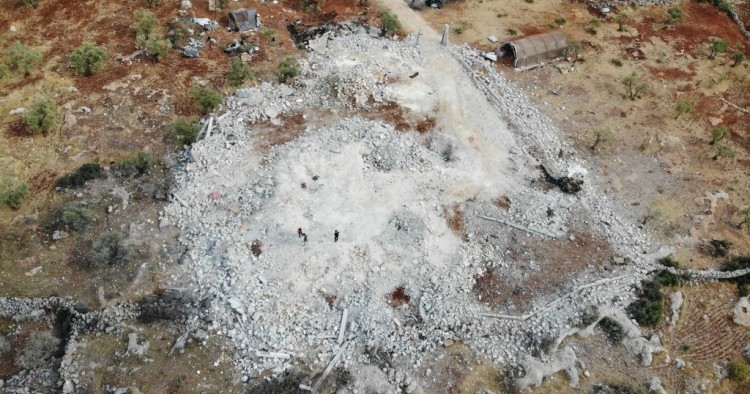
“The practical reality is that U.S. counterterrorism intelligence remains dominated by the pursuit of geolocational information that enables kinetic targeting.”
When You Build a Great Hammer, Why Look Elsewhere?
Killing simply became easier and America’s “final push” to destroy al-Qaeda’s Pakistan-based leadership between 2011 and 2015 preoccupied the Intelligence Community’s focus. This was particularly true at the CIA, which deemphasized human intelligence operations other than those supporting geolocation that might have better informed understanding of how losses in Pakistan were being offset by the growing strength and capabilities of affiliates in Iraq, Yemen, and North Africa.
The momentum in defaulting to kinetic options rather than emphasizing human intelligence and pursuit of upstream targeting was made evident when President Barack Obama acknowledged in April 2015 that a January 2015 U.S. drone strike targeting al-Qaeda in South Asia amir, and American citizen, Ahmed Farouq, inadvertently killed two hostages, Warren Weinstein, an American kidnapped in 2011, and Giovanni Lo Porto, an Italian seized in 2012. A lack of patience in conducting due diligence through additional collection tools concerning Farouq’s presence stemmed from the targeting philosophy that did, and still prevails. In the end, no one among those involved in planning, approving, and executing the strike was held accountable.
It’s not that Farouk did not merit his fate, but additional collection tools focused on him would have offered deeper insights into the group’s planning, his associates, perhaps have led upstream to Zawahiri, and in the process, identified the collocation of the two hostages.
Ultimately, such neglect of broader intelligence issues, trends and the preoccupation with al-Qaeda’s Pakistan-based leadership contributed to the U.S. Intelligence Community’s failure to recognize the threat from ISIS and that from other al-Qaeda affiliates. And ISIS was a group we should have understood better, one that evolved from the surviving associates of Abu Musab al-Zarqawi and those he influenced among al-Qaeda in Iraq’s followers.
Zarqawi was a Jordanian militant killed in a 2006 U.S. operation in Iraq, whose perceived prioritization of “apostate” targets among Iraq’s Shi’a and ethnic minorities made him at times too bloodthirsty and indiscriminate even for al-Qaeda’s core leadership. Instead, the Intelligence Community dismissed ISIS from 2012-14, more attuned, if at all, to the rise of another al-Qaeda offshoot, the Nusra Front. It is worth noting that the leadership of Syrian-based al-Qaeda affiliate Hurras al-Din includes leaders who worked with Zarqawi, and some with marital ties both to him and Iran-based al-Qaeda senior leader Saif al-Adel.
The early June 2020 deaths of Hurras al-Din leader Abu al-Qassam al-Urduni, aka Khalid al-Aruri, and associate Bilal al-Sanaani in a drone strike is a significant loss for al-Qaeda’s external operational planning. Its tactical military success offers just the opportunity to achieve more strategic results. Maximizing the impact requires greater manipulation of the group’s dynamic, its ties to core al-Qaeda, and local appeal from which it garners sanctuary, financing, and new recruits. This is best achieved through additional intelligence collection that informs approaches to further weaken and ideally dismantle the group through shrewd covert influence and complementary whole of government, soft power efforts. More likely applying its outdated strategy, however, I expect our intelligence efforts are dedicated to finding the next target to strike.
U.S. counterterrorism strategy remains stagnant, largely single threaded and philosophically transactional in nature. Indeed, while previous administrations have been guilty of over-reliance on transactional approaches due to their relative simplicity and short-term gains, President Trump and his White House have made it the default. This is no surprise given such a philosophy suited the president’s approach to business. But unlike in business, national security realities have few rules. More importantly, when it comes to threats, you can’t walk away from your problems by defaulting on a loan or claiming bankruptcy.

“… while previous administrations have been guilty of over-reliance on transactional approaches due to their relative simplicity and short-term gains, President Trump and his White House have made it the default.”
All Politics is Local
While global in its nature and impact, terrorism begins at a grassroots level and is facilitated or constrained by great power competition, technology, and economics. The 9/11 Commission Report spoke of the need to “Engage the Struggle of Ideas” and “the compounding impact of harsh economic conditions which Jihadists so effectively exploited.” The report further concluded that “the United States has to help defeat an ideology, not just a group of people, and we must do so under difficult circumstances.” And while aspiring to embrace the 9/11 report’s encouragement that the U.S. should “offer an example of moral leadership in the world,” we must take care to consider that such will be interpreted through the eye of the beholder.
America would do well to embrace this proverb when considering its international engagement. Such a prism would not only strengthen America’s counterterrorist strategy, but also its broader approach to national security and foreign affairs. It starts with abandoning the illusion that the U.S. can harden itself as a fortress through a labyrinth of defenses, physical, legal, or otherwise. In today’s smaller, interconnected, and interdependent world, that which we might fear has surely already arrived.
Extremism has grown when terrorist leaders leverage grassroots conditions and exploit family and tribal dynamics to expand recruitment and assure organizational discipline. U.S. counterterrorism strategy can do likewise. My experience as a CIA case officer for the better part of four decades supported the idea that grassroots considerations had the greatest influence over a person’s direction. Whether engaging a terrorist or a rival great power’s intelligence officer, securing their agreement to spy for the U.S. leveraged considerations closer to home than ideology alone — an over-simplification that does not mean to undermine ideology’s value, but emphasizes more that which is in common than what divides. The bridge to cooperation depends less on a shared world view and America’s place in it, and more on U.S. reliability as a partner addressing their needs and living up to commitments.
Just as people do not spy for money in and of itself, they take to violence in the belief in how it addresses a need or obligation. Money facilitates a goal, be it purely mercenary in supporting a grander lifestyle or in providing for a family’s basic needs, education, or medical assistance not otherwise available. Violence, like money, is a means to an end for the individuals who join extremist groups who are cultivated, manipulated, and directed at a grassroots level, often by familial and tribal connections.
As a CIA officer, my burden of proof was trust and reliability, not changing an adversary’s point of view. I recruited terrorists who rejoiced at 9/11 and foreign officials who lambasted American hypocrisy and imperialism. Both sorts were thoroughly reliable and extremely prolific in passing on secrets which mortally wounded their own organizations. They did so from need, and based on trust, not ideological agreement.
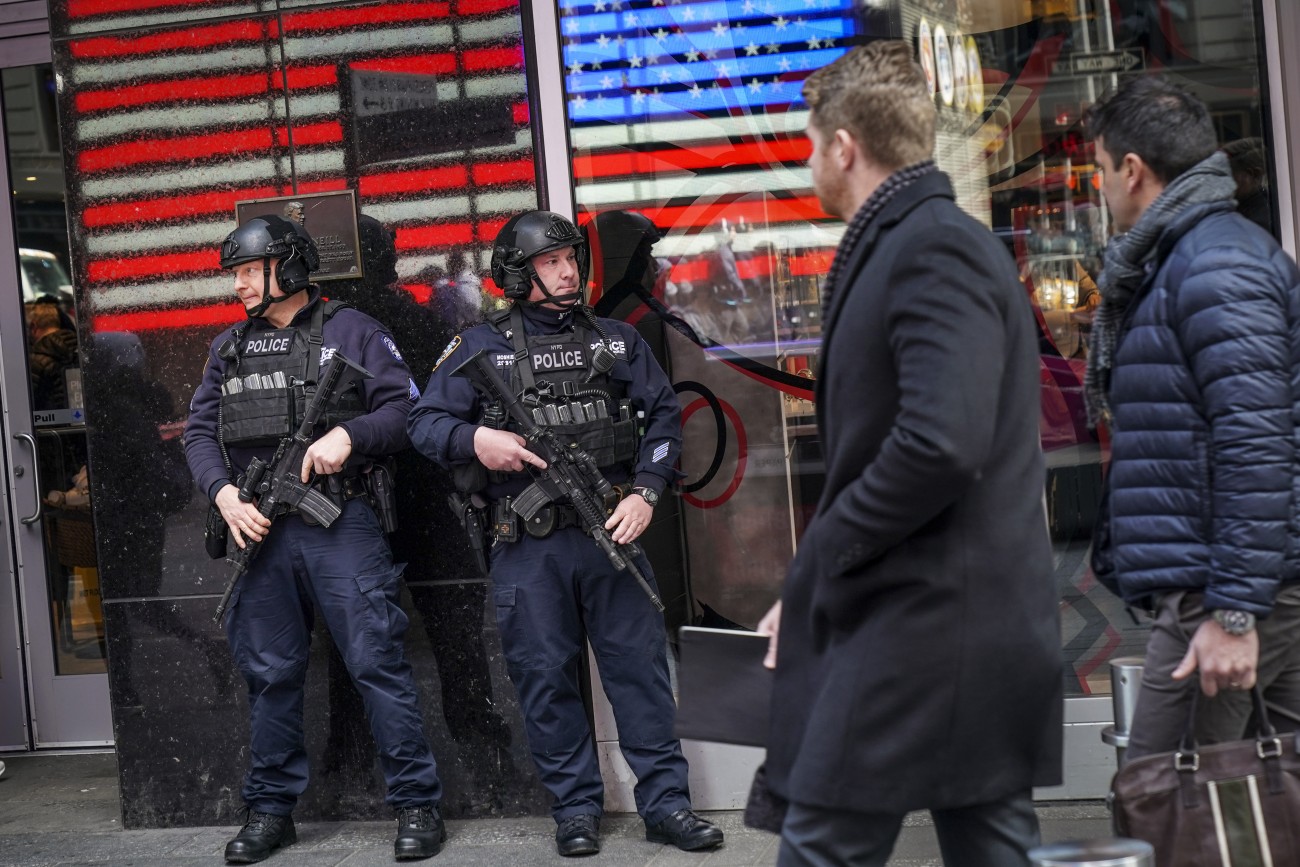
“It starts with abandoning the illusion that the U.S. can harden itself as a fortress through a labyrinth of defenses, physical, legal, or otherwise. In today’s smaller, interconnected, and interdependent world, that which we might fear has surely already arrived.”
The Provincial Reconstruction Team and Building the Conditions for Soft Power to Work at a Grassroots Level
Those same lessons I learned dealing with individuals were reflected on a larger scale engaging their communities. America’s cooperation on the ground in conflict zones has worked best when the U.S. was not perceived as an occupying force but rather a facilitating entity addressing a critical local need. But this required conditions that facilitated the community’s will, interest, and capacity to ensure security for such cooperation to prosper.
The risk of “green on blue” attacks in conflict zones was significantly less when those operating with Americans, be it military or civilian enterprises, gained admission only after local tribal and family members accepted responsibility for their inclusion. A bit like being “made” in the Mob, but effective, elders had to vouch for them and accept responsibility. While not foolproof, successful examples include some of the special operations units such as the Afghanistan National Army Commandos, the National Directorate of Security (NDS) special operations forces, the Iraqi Counter Terrorism Service unit, and the U.S. relationship with Syrian Kurdish forces. American special operators, trainers, intelligence officials, and advisors worked and lived among these units, in the most successful cases over extended and repeat assignments and best when without significant firewalls. Their presence generally brought with it economic benefits, medical care, and education that resonated at a grassroots level.
Less successful was the assembly line training of Afghan and Iraqi conventional army and police forces, as was likewise the problem for American training efforts in Lebanon’s multiethnic society and parish system of the 1980s. Candidates for such units had little connection with one another and did not necessarily embrace a common nationality. Their vetting was carried out not through members of their own communities who knew them personally, but rather through less intimate and bureaucratic processes by strangers. The American advisors, trainers, both military and civilian, were largely one-time visitors who formed no connection and maintained a distance for security. Easily penetrated by insurgents and extremist groups, be it the Taliban, the Haqqani Taliban Network, ISIS, Lebanese Hezbollah or the various al-Qaeda associated partner groups, such enterprises witnessed the most frequent occurrence of “green on blue” incidents and achieved the least tangible success.
The Provincial Reconstruction Teams (PRTs) the U.S. and its international partners established in Afghanistan and Iraq were intended to bring complementary soft power resources to the counterterrorism fight at a local level. But the PRT concept struggled to find balance blending military, civilian reconstruction, and aid organizations. Optics were a problem regardless of the command structure of such teams, under military leadership in Afghanistan, and civilians in Iraq, since they appeared more an isolated, occupying force facilitating night raids against both friend and foe, rather than benign units out to strengthen grassroots stability and prosperity. Indeed, in application, PRTs were too frequently held hostage by military imperatives and security hardening to guard against threats. Uniformed, heavily armed, civilian PRT members there to win hearts and minds were hard to distinguish from occupying coalition military forces.
American models that sought to re-enforce centralized government planning, leadership, and budgetary control failed to align with historic and cultural realities on the ground and facilitated gross and endemic corruption and redirection of resources. Rather than build a greater sense of national cohesion, the corruption exacerbated differences, rivalries, and long-simmering internecine feuds and undermined PRT projects. But priorities might also account for the lack of greater success.
Apart from all too frequently undermining PRT civilian efforts for military objectives, projects were weighted to support metrics and flash. While not questioning the utility of high cost infrastructure projects such as roads, greater attention to health, education, and entrepreneurial small business development might have been wiser. Better medical care and schools might have more effectively and expeditiously shaped the mentality and environment at a grassroots level that could have addressed the conditions that foster extremism and invite the short-term allure of order and stability that groups like the Taliban, ISIS, and al-Qaeda offered.
The old adage every spy knows all too well is that of using health, wealth, and family to increase one’s influence over others. Improving the local community’s quality of life through better health care, literacy, and vocational skills to likewise address their immediate and long-term economic prospects would have done more for American influence than a mile of road, a bridge, or another night raid or drone strike. Micro loans and more emphasis on helping communities develop sustainable means of income might likewise have had a more tangible impact on their susceptibility to extremist influence. Enabling communities to expand agriculture and open auto repair shops, computer learning centers, and grocery stores makes them invested in stability, but is unfortunately less sexy than videos of terrorists being blown up in their cars by Hellfire missiles.
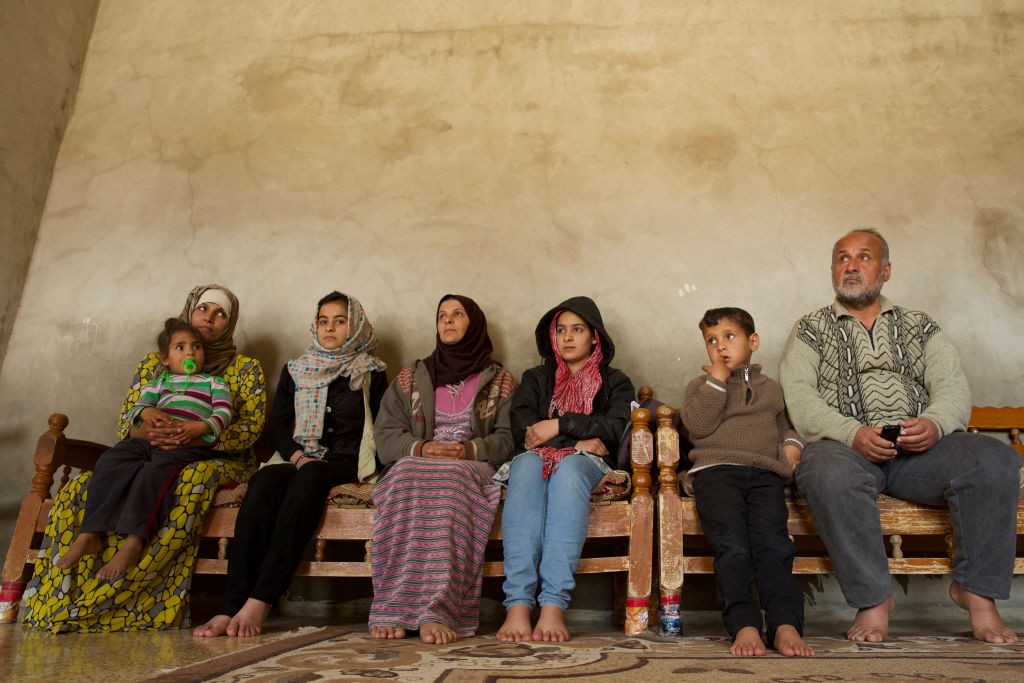
“Improving the local community’s quality of life through better health care, literacy, and vocational skills to likewise address their immediate and long-term economic prospects would have done more for American influence than a mile of road, a bridge, or another night raid or drone strike.”
You Can’t Defeat Terrorism in a Vacuum
Great power competition, counterterrorism, global health, climate change, energy security, cyber and economic prosperity, for example, are all linked, much of it by virtue of technology and the economic interdependence which it has fostered. As such, no single issue can be successfully addressed in a vacuum without considering the crosspollination of the others. Global powers often see counterterrorism through skewed political optics rather than the broader threat.
The Pakistan-India rivalry complicates a lasting peace in Afghanistan and across South Asia, where both parties view the matter predominantly through their bilateral optic. Islamabad’s military dominated leadership fears giving India a front along another border as it might achieve through strengthened bilateral and military ties with the internationally recognized and U.S. supported Islamic Republic of Afghanistan. India, meanwhile, looks to bleed Pakistan through insurgent attacks from groups that find refuge in ungoverned space or that controlled by the Afghan government .
Though logic might suggest Russia and the U.S. would cooperate against mutual threats from terrorism more broadly, and ISIS in particular, insulated from political opinion or a free press even were attacks in Russia to grow, Vladimir Putin’s approach is that which hurts the U.S. is good for Russia, including the scourge of terrorism. As eager as he is to see conditions that enable U.S. troops to depart nearby Afghanistan, late June 2020 press reports alleging Russian bounties for Taliban attacks against American forces reflect his priorities. This includes bleeding the U.S. and settling scores like those from Afghanistan in the 1980s and a 2018 incident in which U.S. forces defending themselves in Syria left a reportedly high but undisclosed number of Russian mercenaries dead. Iranian-U.S. dynamics and the Arab-Israeli conflict similarly set the tone for the Middle East just as partisan politics likewise limits our agility at home.
Countering extremism and defeating terrorism is a multilayered chess board that requires synergy of moves and anticipation of unintended consequences several steps ahead. A lasting solution to Afghanistan requires addressing the Pakistan-India relationship, just as addressing peace in the Middle East is unlikely to be achieved without dealing with Iran and finding a peaceful solution to the plight of the Palestinians. All of this is to say that transformational approaches are no longer an idealistic option, but must increasingly serve as the fundamental goal, and our measure of success.
I’ve sat in grand planning meetings with U.S. military flag grade officers, generals, and admirals, only to hear the fundamental contradiction on display. Flag officers responsible for combat operations clung to chest-thumping clichés like “we’re going to stack their bodies like cord wood.” Their geographic combatant commanders were often eager to demonstrate a more cerebral side and statesman approach, often opining that “you can’t kill your way out of defeating terrorism.” While the latter might have been sincerely uttered, the reality consistently held that battle lust wins out. It’s a dynamic that has ruled the day at the CIA’s Counterterrorist Mission Center as well, and for the very same reasons.
Threats to our security and way of life today from all quarters seem to be multiplying at a breathless pace. It’s well past time to shift gears in addressing counterterrorism by using all tools of power, seeing the world as it is, and not as we would like it to be, and liberating ourselves from a belief that those who are not with us are against us and therefore need conversion, removal or regime change, and at the pointy end of a sword. While there will be adversaries with whom force and a muscular deterrence will remain a necessary component, most of those who do not agree with us merely need a reason to peacefully coexist. It’s far less costly in terms of blood and treasure, and longer lasting.
About the author
The author, Douglas London, is a retired CIA Clandestine Service Senior Operations Officer, Adjunct Associate Professor at Georgetown University’s Center for Security Studies and a Non-Resident Scholar at the Middle East Institute. His assignments spanned the Middle East, South Asia, Africa and Central Eurasia during which time he served several times as a CIA Chief of Station. Mr. London retired in 2019, his last assignment as CIA’s Chief of Counterterrorism for South and Southwest Asia. Follow him at @douglaslondon5.












